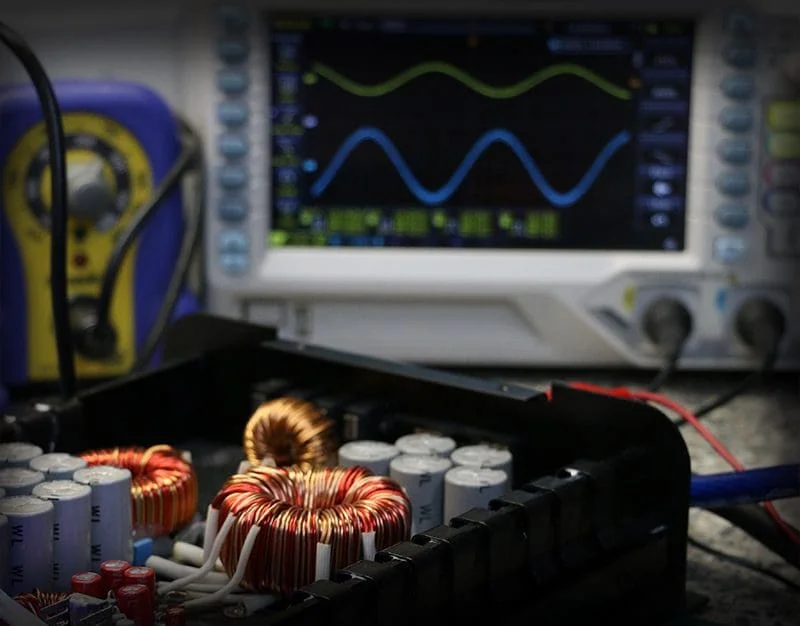 We’ve touched on the topic of signal-to-noise ratio in car audio amplifiers before. This specification is one of the most important in quantifying the quality of the amplifier you are going to choose for your audio system. While the power ratings are the only way we’ll know how loudly an amp can play, the noise specs give us a look at the design philosophy of the amp. Quite simply, premium amplifiers produce less noise for a given amount of signal. The last thing you want to hear after having a high-end audio system installed is background hiss while trying to enjoy your music.
We’ve touched on the topic of signal-to-noise ratio in car audio amplifiers before. This specification is one of the most important in quantifying the quality of the amplifier you are going to choose for your audio system. While the power ratings are the only way we’ll know how loudly an amp can play, the noise specs give us a look at the design philosophy of the amp. Quite simply, premium amplifiers produce less noise for a given amount of signal. The last thing you want to hear after having a high-end audio system installed is background hiss while trying to enjoy your music.
We’ve recently invested in some new test equipment to help us visually depict some of the more difficult-to-understand concepts as they pertain to product specifications. We hope you enjoy!
What Causes Noise in an Amplifier?
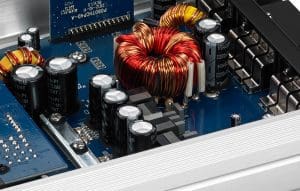 All electronic devices add varying amounts of noise as the signal passes through the device. Simple passive components like resistors have a nearly immeasurable effect while high-gain op-amp circuits can wreak havoc when not executed properly. The overall design and layout of a car audio amplifier has a dramatic effect on its noise performance. Small amps place the power supply in close proximity to the gain stage which increases noise. Amplifiers capable of huge amounts of power are also prone to noise because there is a lot of gain designed into the system.
All electronic devices add varying amounts of noise as the signal passes through the device. Simple passive components like resistors have a nearly immeasurable effect while high-gain op-amp circuits can wreak havoc when not executed properly. The overall design and layout of a car audio amplifier has a dramatic effect on its noise performance. Small amps place the power supply in close proximity to the gain stage which increases noise. Amplifiers capable of huge amounts of power are also prone to noise because there is a lot of gain designed into the system.
Keep in mind that when you take a small signal and make it larger, any noise present in the signal will be amplified by the same amount as your music. This is just one of the reasons why it’s important to choose a high-quality source unit and signal processor when shopping for a premium audio system.
How We Specify Noise
As per the CTA-2006-B specification, car audio amplifiers are tested for noise with an output level of 1 watt of power into a 4-ohm load. This equates to 2 volts rms. Where the spec falls short is in specifying how much signal should be presented to the amp to make the measurement. In most cases, the sensitivity control on the amp is turned all the way down to maximize the measurement. I have it on good authority that CTA-2006-C will include more details as it pertains to noise measurement.

The image above shows the background noise of a high-end two-channel car audio amplifier with the inputs shorted. You can see the background noise is at a level of -120.43 dBV (that means it’s 120.43 dB lower than a 1 volt of output).
You can see some noise present at 35 and 72 kHz. These signals are caused by the power supply but are well out of the audible range of 20 Hz to 20 kHz.
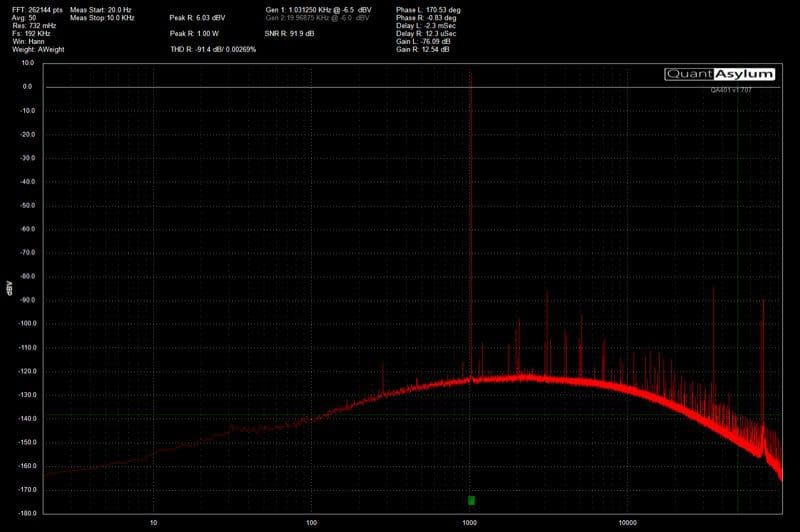
This image shows the amp producing 1 watt of output into a 4-ohm load and the resulting harmonic distortion and noise that accompanies the signal. The large signal at 6.03 dBV is our 1 kHz test signal, and the third-harmonic spike at 3 kHz is 91.9 dB below the 1 kHz stimulus and is where we take our measurement.
It’s the difference between the two signals that provides the signal-to-noise ratio rating. The manufacturer of this amplifier rates it as having a S/N ratio of -88 dB. Our test clearly shows the performance is markedly better. How often does that happen?
Old-School Noise Measurements
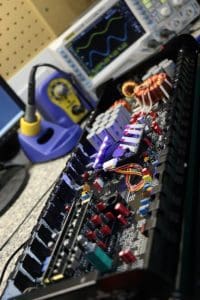 Before the adoption of the CTA-2006 specification, many amplifier manufacturers provided a S/N ratio measurement that referenced the maximum output capability of the amplifier. These numbers were much higher than the CTA-2006 spec and most certainly look great on paper.
Before the adoption of the CTA-2006 specification, many amplifier manufacturers provided a S/N ratio measurement that referenced the maximum output capability of the amplifier. These numbers were much higher than the CTA-2006 spec and most certainly look great on paper.
To give you an idea of how the numbers compare, if we measured the above amplifier at 10 watts of output rather than 1 watt, assuming there was no additional noise added to the signal, the S/N ratio specification would increase to -101.9 dB. If we measured the amp at 100 watts, the spec jumps to -111.9 dB. Finally, at the full 300-watt output capability of the amp, we’d see a spec of about -116.7 dB.
If you are looking at amplifier specifications and see a number into the -100 dB region, check to see if it’s referenced to its full power rating or to 1 watt of power. If it’s full power, you can do a rough calculation of its 1-watt performance by adding 10 dB for every time to divide the output power by 10. A 1,000-watt amp with a -95 dB S/N ratio referenced to full power likely has a spec of roughly -65 dB when referenced to 1 watt.
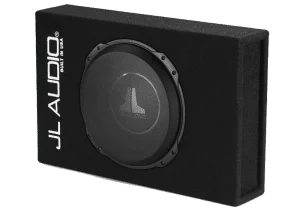 One last note about noise. The specification is really only important for amplifiers that will be used to drive midrange and high-frequency speakers. The weight of most subwoofer cone assemblies is adequate that it can’t respond to high-frequency information. With that said, if you’ve chosen small subwoofers, say 8-inch or 6.5-inch, you may hear some noise if they are in the vehicle with you and not in a trunk.
One last note about noise. The specification is really only important for amplifiers that will be used to drive midrange and high-frequency speakers. The weight of most subwoofer cone assemblies is adequate that it can’t respond to high-frequency information. With that said, if you’ve chosen small subwoofers, say 8-inch or 6.5-inch, you may hear some noise if they are in the vehicle with you and not in a trunk.
S/N Ratio is a Good Indicator of Amplifier Quality
Amplifier designers and engineers capable of designing an amp with amazing S/N ratio specification are few and far between. When you are at your local car stereo shop, it’s definitely worth looking at this specification to help determine which solution is best for your vehicle. Choosing an amp with low background noise levels is a great way to prevent hiss in your stereo system and ensure that you can enjoy your music to its fullest.
Please check out other articles in our series on Understanding Specifications.
